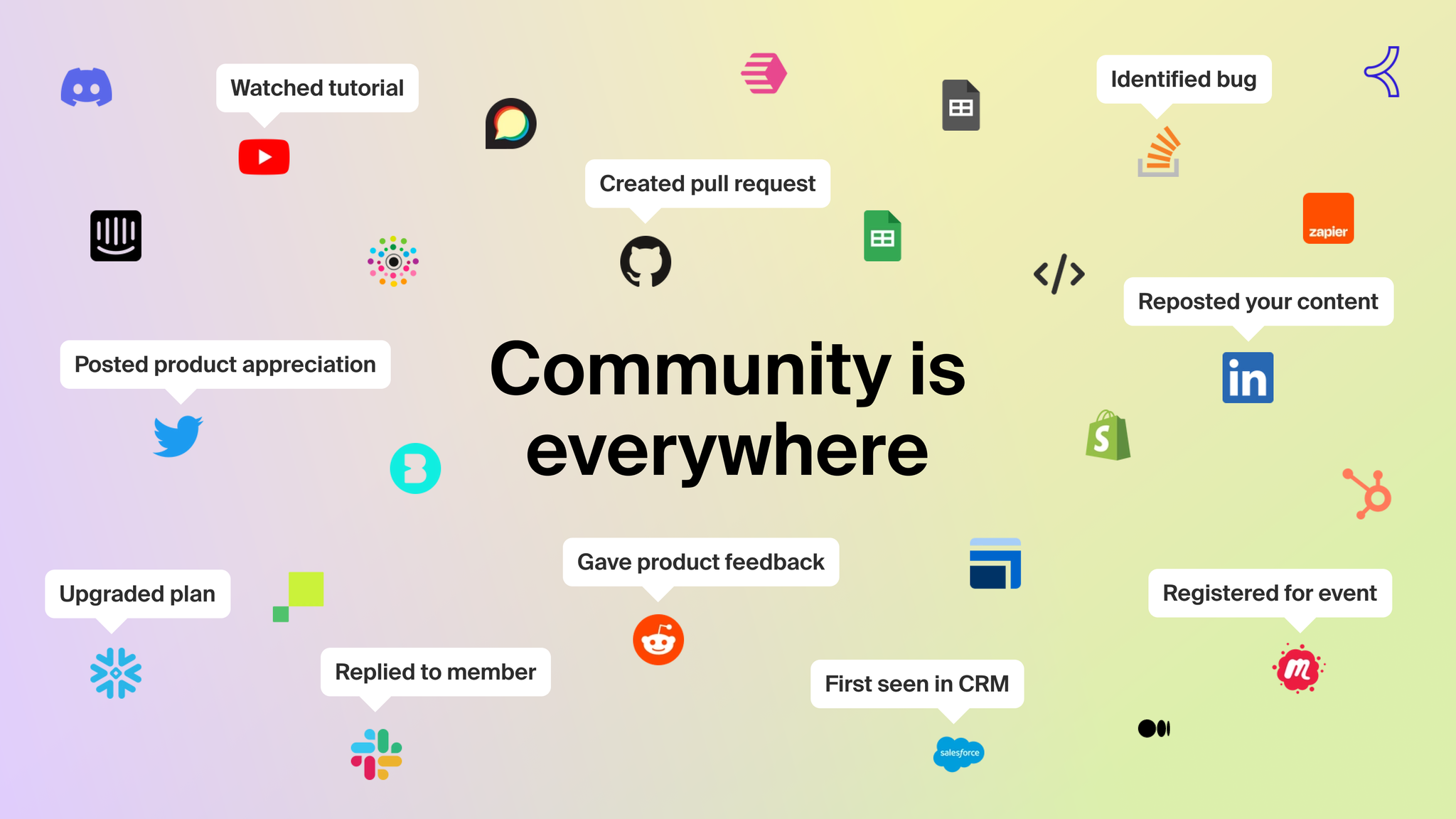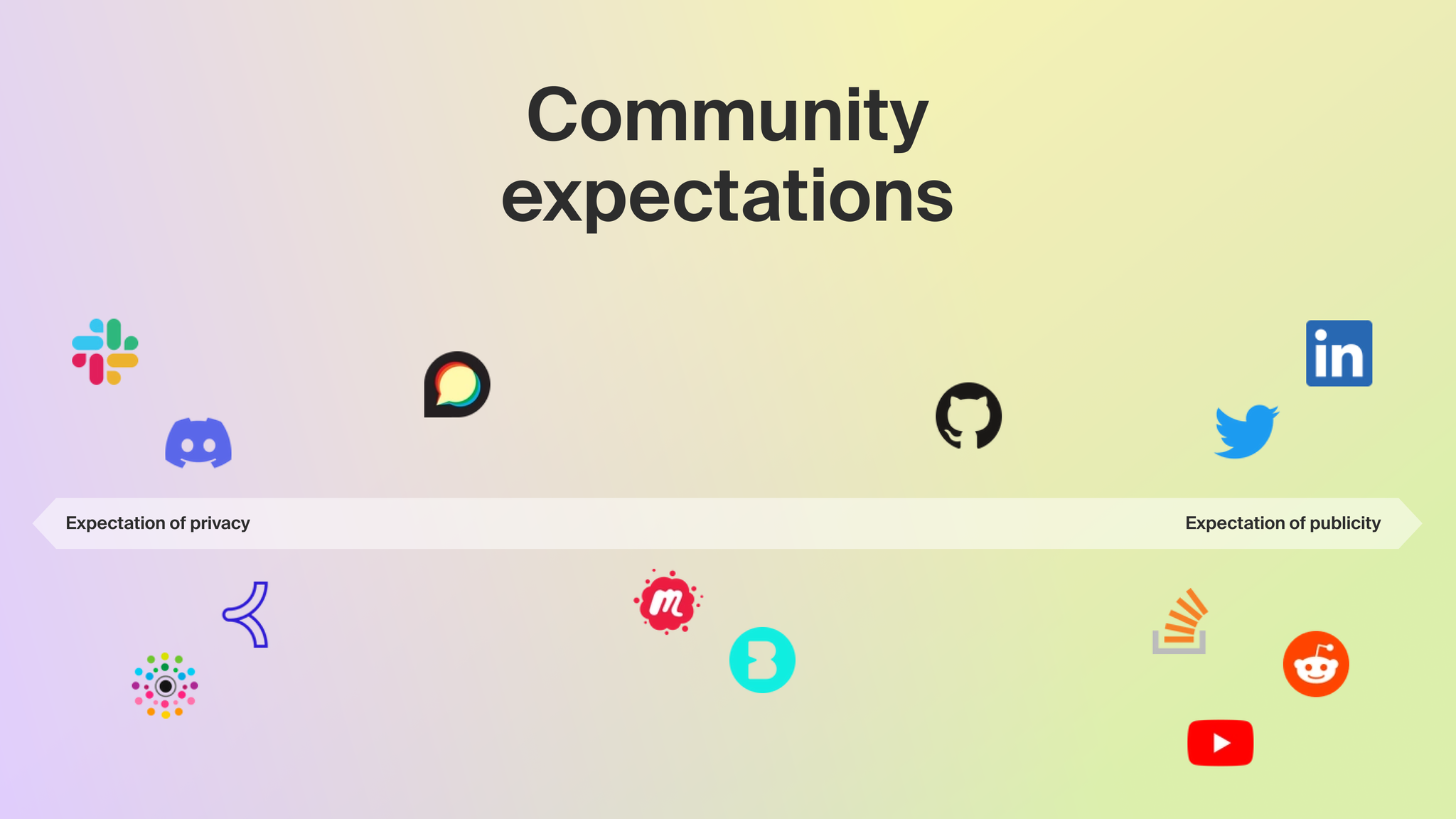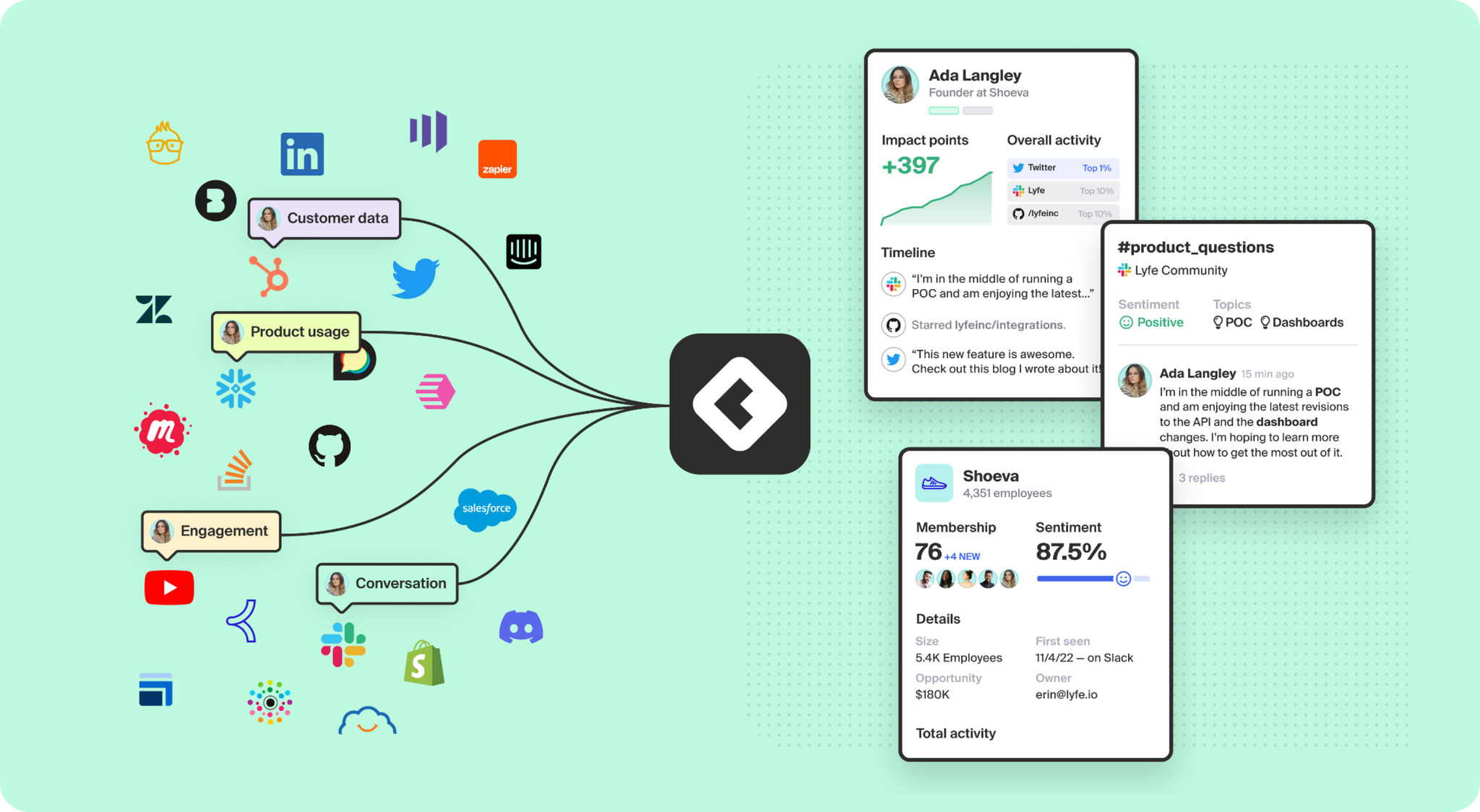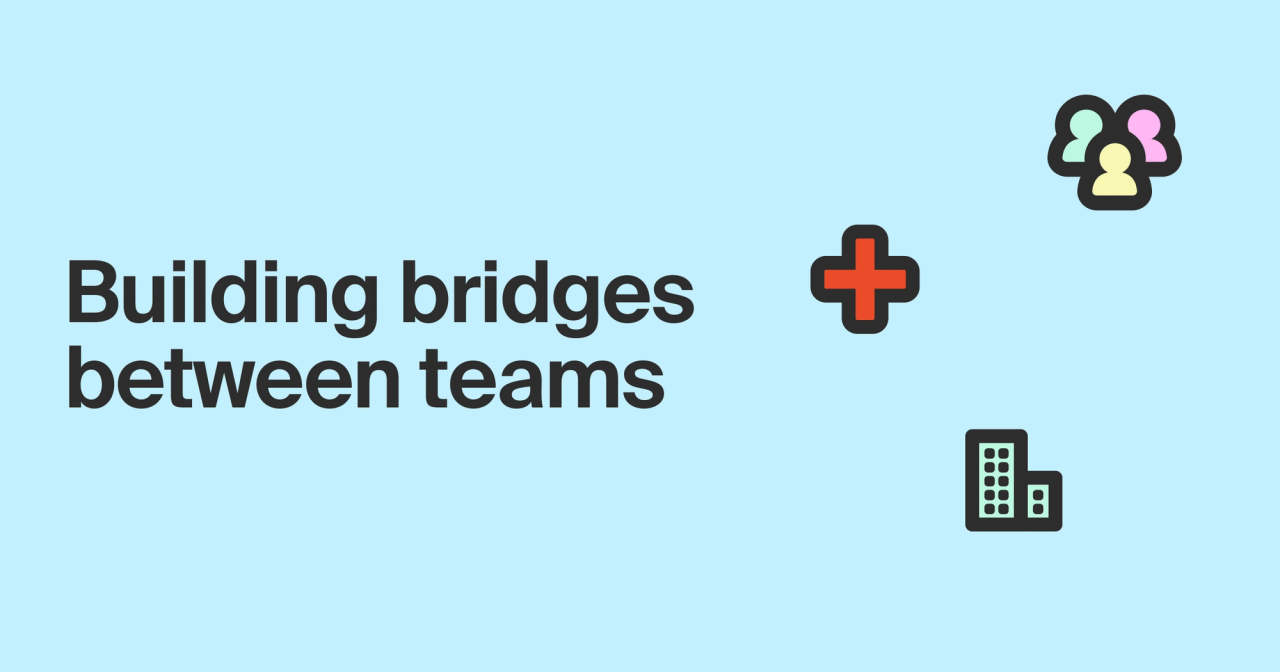The way customers find, buy, and adopt products has changed, and go-to-market teams are racing to keep up.
Case in point: GTM professionals are paying a lot more attention to customer (and potential customer) activity in community spaces, either on owned channels like Slack and Discord or unowned channels like LinkedIn and Stack Overflow.
This has people talking about the intersection of community and sales—specifically in terms of responsibilities and risks. Community teams are wary of sales folks using community spaces as lead lists, and sales teams are worried about being locked out of community insights that will help them have more contextual, value-based conversations.
It’s a discussion worth having. It’s one we’ve had (and continue to have) at Common Room.
Keep reading to learn:
- How we view community and its role in a business context
- Which guidelines we follow to serve both our community members and our business goals
- What we do to maintain the partnership between our community and sales teams
What we talk about when we talk about community
In its simplest form, a community is when people come together around a specific interest, activity, or goal. And today, they come together online—on Slack, Discourse, GitHub, Reddit, and many other digital touchpoints.
Naturally, communities sprout up around companies and their products. This is especially true in the B2B SaaS space, where product-led growth is the norm. Communities are a way for users to come together to learn about features and functionalities, provide feedback, share ideas, help each other get more value out of a product, and deepen their learning about their industries and its best practices.
We believe that every individual joins a community for their own reasons, and that it's important to meet members where they are. For some community members it’s about learning. For others it’s about connecting. And for many, it's about trying before buying.
Lots of community members want to experience the value of a product, and they're looking to have conversations with people who can help them do it—up to and including sales professionals who can set them up for success and help them achieve more.
What we hear from our own community members, customers, and internal teams is quite similar: Communities are a place of value exchange. They’re mutually beneficial spaces, whether that benefit flows from member to member, member to company, or company to member. The reciprocal education, ideation, and enablement that occurs in communities creates opportunities for value creation and value capture for all parties.
The gap between community and sales teams isn't one of belief—it’s one of approach. That is, how each team approaches creating and capturing value while tending to its own objectives.
Put simply, community teams want to empower their members (and turn them into brand champions) via education, connections, and resources that help them achieve their goals with a product or within a larger practice. This ultimately impacts marketing and sales by increasing awareness, distribution, and lead generation. Compared to their sales colleagues, community teams operate on a longer timeline.
It’s different for sales teams—they measure time in quarters. They want to quickly and consistently identify community members who are ready to go deeper into the product because they match the characteristics of someone who would get immense value out of becoming a customer. Their goal is to set up calls and have conversations with people who are ready to make a purchase and unlock more product value.
Both teams want to create value for members, and both teams want to capture value that ladders up to overarching business goals in the long and short term.
In our experience, a lot of the confusion about how to reconcile these approaches stems from the difference between the community channels you own and the community channels you don’t.

‘Big c’ community vs. ‘little c’ community
We talk to lots of companies every day about community, including organizations that say they don’t have one.
That’s because they associate community with company-maintained forums, company-run user groups, and places for daily conversations, such as company-managed Slack workspaces.
But the truth is you have a community whether you interact with it or not. There’s the activity you nurture in owned channels (your “little c” community) and the activity happening across unowned channels without your input or control (your “big c” community). You may have both, but if you sell a product, you most certainly have the latter.
| Owned communities | Unowned communities |
|---|---|
Activity on owned channels that are hosted and managed by companies. | Cross-channel activity unrelated to official company programs. |
Owned communities are ones that people have to proactively join. They’re communities of product where people come together to explore how a technology works, get questions about it answered, and work together to improve it. Or they’re communities of practice where people come together to improve their skills, gain more knowledge, and work side by side to hit certain goals. Sometimes they’re a combination of the two: part support center, part learning center, and part social gathering spot.
Unowned communities are more ambiguous. They’re not fixed, dedicated spaces so much as a collection of activities spread across channels: comments under a YouTube video, starred repositories on GitHub, product recommendations posted in a subreddit. People can organically create, join, and leave them without even realizing that’s what they’re doing.
Whether community members are coming together in an owned or unowned channel, keeping up with what they’re saying, what they’re doing, and how they feel about it (or even getting visibility into this activity in the first place) is hard. It’s even harder to know exactly who’s doing what, let alone connect the dots between their activities in one channel versus another. Hence the term “dark funnel.”
And that makes participating in or influencing this activity next to impossible.
We created Common Room to help organizations understand the engagement happening across these channels, combine those signals with the product and customer data they already have, and use those insights to take the right actions at the right time across the entire customer journey—quickly and at scale.
But owned and unowned communities are very different creatures. And as you might imagine, member expectations shift between the two.

Meeting customers where they are (and meeting their expectations)
Common Room is designed to give you a 360-degree view of the people who make up your community across both owned and unowned channels.
We think of these channels as a spectrum with the expectation of privacy on one end and the expectation of publicity on the other. Where a channel falls on that spectrum indicates implicit assumptions about how a company engages community members. In other words: Different platforms come with different expectations and behavioral norms.
For example, channels like Slack are strongly associated with owned communities and the private end of the spectrum. People come to these channels with the expectation that organizations want to provide education, answer questions, and help them grow. They don’t expect to receive unsolicited and unconsented messages from sales teams that are only trying to pitch them as opposed to getting to know their pain points, goals, and use cases.
On the other hand, channels like LinkedIn are more associated with unowned communities and the public end of the spectrum. People come to these channels to crowd-source solutions, give opinions, and share experiences. There’s an expectation that a sales representative may reach out based on their activity, whether it’s a comment under a post or a private message.
Ultimately, it’s up to every organization to determine what its goals are, what it’s comfortable with, and what that looks like in practice across different channels. That being said, there are certain best practices we follow internally at Common Room.

Common goals instead of competing priorities
You can create complicated frameworks and flowcharts, but we believe true partnership between community and sales teams is based on mutual respect.
For us, that means:
Empathy
We work to understand each other’s goals, how success is measured across different teams, and the ways community may help.
Communication
We talk openly and honestly (and sometimes very colorfully) about how and for which purposes it makes sense for salespeople to get involved in our community.
Collaboration
We look for opportunities to work together (and coordinate who should take the lead) to improve alignment and visibility.
How we work together changes depending on whether it concerns our owned community space, the Uncommon Slack, or activity happening on unowned channels.
When it comes to our owned community, I’m the captain of the ship and sales is a member of my crew. But when it comes to our unowned community, I’m just the first mate. I can help supply sales with insights into activities happening across channels and provide key context for where community members are in their customer journey, but they’re the ones steering the ship.
Sometimes owned and unowned channels overlap, and it’s in those situations where having a shared guiding principle is essential. We boil it down to a single question: Will doing something increase the likelihood of a person recommending our community and product to their peers or not?
We've set up guidelines (bulleted below) about what it means to share with our Uncommon community rather than pitch it. If a member of our Slack community asks a question or surfaces a challenge we feel like our sales team can help with, we use the following protocol:
- The salesperson introduces themself.
- They personalize their message based on the context Common Room provides (and make sure it’s value-additive, not self-serving).
- They ask permission to follow up with the community member.
- They don’t ask for a meeting.
- They include a voice note (because we’re humans just like our members, not robots).
When I ask how things are going, it's with the understanding that my sales colleagues will be transparent about how community interactions are received. In other words, what was a glow (what went really well) and what was a grow (what could have gone better).
If an interaction was a grow, we work together on ways to improve it. That may mean offering a different mechanism for value, such as connecting a prospect to someone in their industry who can help with their goals or sharing a piece of relevant content with them that they can review on their own time. Or it may mean stopping outreach altogether and giving a member space.
A new member joins our Slack community and the community leader (me) sends them a welcome message. That member introduces themself in our #say-hello channel and we identify that they match our ICP (ideal customer profile) criteria through the insights Common Room gives us.
That member posts a question in our #common-room-product-help channel and we see that they’re not on a paid plan but that additional paid functionality would help them achieve their goal.
I let our sales team know and one of my colleagues sends them a no-pressure, no-pitch direct message to introduce themselves. In it they let the member know that they're available if they’re interested in learning more about how paid versions of our product can help them get where they want to go.
To codify these types of exchanges, we're working on building an internal code of conduct in addition to our external code of conduct. While the latter also applies to our internal team, we believe we have the responsibility to go above and beyond those expectations as we chart the partnership between community and sales.
Above all, it’s essential that every team member sees themselves not as their role or title, but as a community member. Their goal should be to learn and share as much as anyone else and model the behaviors we want to see in our wider community.

Putting partnership into practice
We use Common Room to help us walk our talk.
With team notes, we can document relevant information about different community members, tag our colleagues with questions and concerns, and generally make sure everyone is on the same page.
As for our Slack community, workflows help me make sure that when a new member joins, the first touch is always from me. Team alerts and auto-categories help me stay up to date on any questions or issues and, when it’s appropriate, route individuals to a member of our sales team.
I also use segments to build and manage cohorts of folks my sales teammates might be interested in getting to know when the time is right.
For example, we know that people who join our Uncommon Slack community before they become customers feel more confident in knowing why and how they'd like to grow and support their community using Common Room. The daily chatter of our Slack community provides a faster path to success for them.
So I've built a segment that automatically adds folks who have interacted with us across our social media channels and who are in the industries or have the job titles that get a lot of value from Common Room. Then I reach out to them with an invitation to join our Uncommon Slack. This ultimately makes future sales conversations easier and more valuable for both them and our sales team.
Likewise, I know that our community members will see more value if they actually use our product, so I can also identify members who match our ICP and invite them to create an account.
There are guardrails that can be built into Common Room, as well. With our restricted viewer role, we help companies give some team members view-only access to Common Room so they can access reports, segments, and team notes, but not certain contact details for community members.
Some companies believe DMing a member of a Slack community is never a good idea. We don’t, as long as it contextually makes sense and provides value to the community member.
Tyler Hannan, Senior Director of Developer Advocacy at ClickHouse, summed it up perfectly during a recent community education event when he said:
“There are companies that are well-known for having a very firm line of separation. Community is here, sales is here, and never the twain shall meet. The twain should meet when it's respectful.”
I highly recommend checking out the recap of our event with Clickhouse to hear more of what Tyler had to say about the intersection of community and sales:
Even if certain channels are off limits, that doesn’t mean community and sales teams can’t work together. We recently published a case study with Census about its Slack-based community of practice: the Operational Analytics Club.
Census has a strict no selling policy in this space, but the company’s Marketing Chief of Staff and Director of Developer Marketing, Allie Beazell, will make insights from the community available to the sales team to help it gain valuable context and have more value-based conversations set up outside of the OA Club. As Allie put it:
“Whether it's connecting with our members about their questions and what resources they need or connecting with our sales team to help them better understand our target buyer and their paint points, Common Room has been a great source of insights as we scale.”
I share both of Tyler’s and Allie’s “better together” philosophies. I’m even a little looser about the intersection of community and sales than Allie—and these differences of approach are exactly why I love having deep conversations about community building.
I firmly believe that community and sales should be complementary, and that sales teams should have access to member information for better, more valuable conversations. I also believe community and developer relations professionals should have the power to traffic control access to those insights and what those conversations look like, especially when they’re happening on owned channels.
Sales teams aren’t the only ones under pressure to drive business impact. Community and DevRel folks are increasingly being asked to prove the ROI of their work (and to do it with fewer resources).
Today’s customers gravitate toward communities, whether they’re owned or unowned. That gives every team a chance to contribute to customer success and business growth.
There isn’t a one-size-fits-all answer for every company. There’s only what’s best for your customers, your business, and your team members.
We’re gearing up to release more product features that will help teams work better together, but we believe mutual respect is always the best starting point. I hope visibility into our approach helps make this discussion a little easier for everyone involved: you, your colleagues, and, most importantly, your community members.
Keep the conversation going in Uncommon
Want to share your thoughts? Join the Uncommon community on Slack to connect with thousands of community, developer relations, and, yes, go-to-market leaders just like you.
